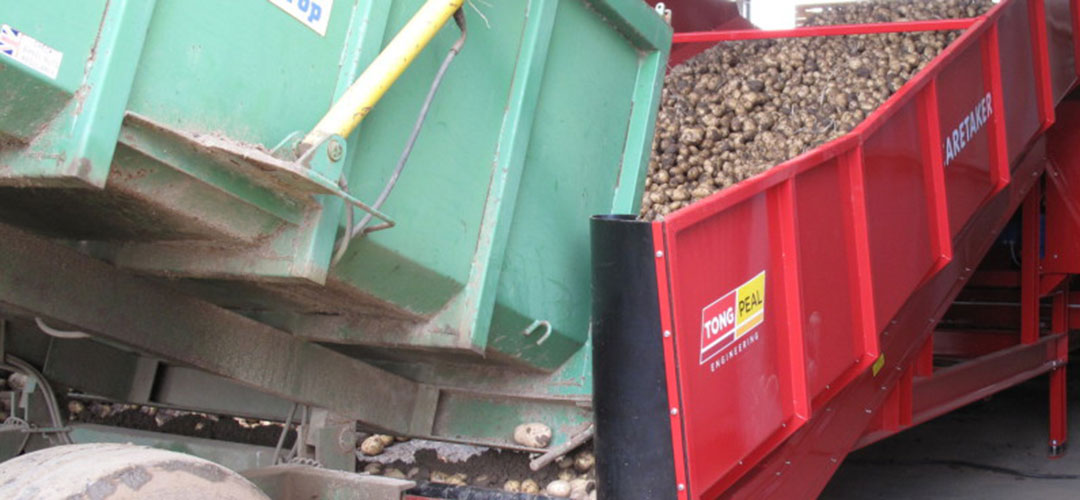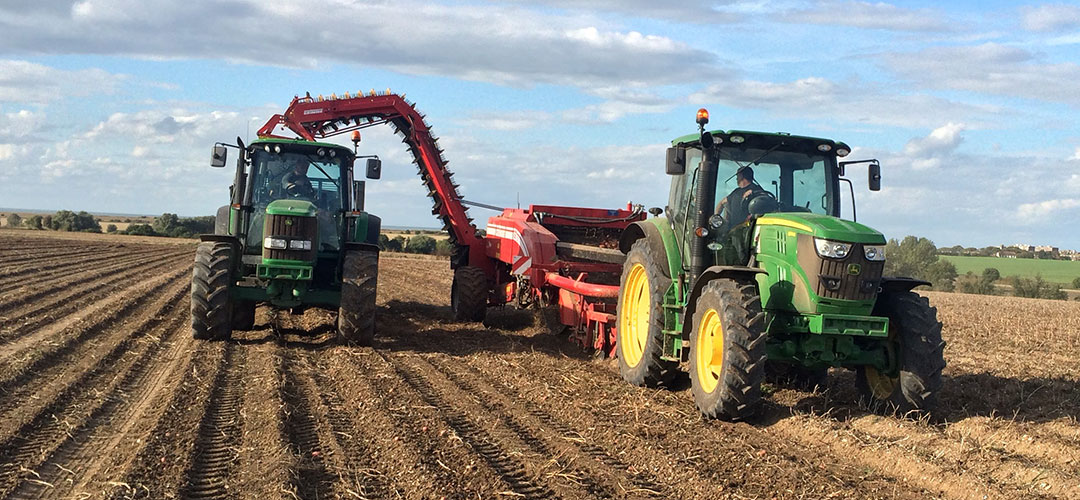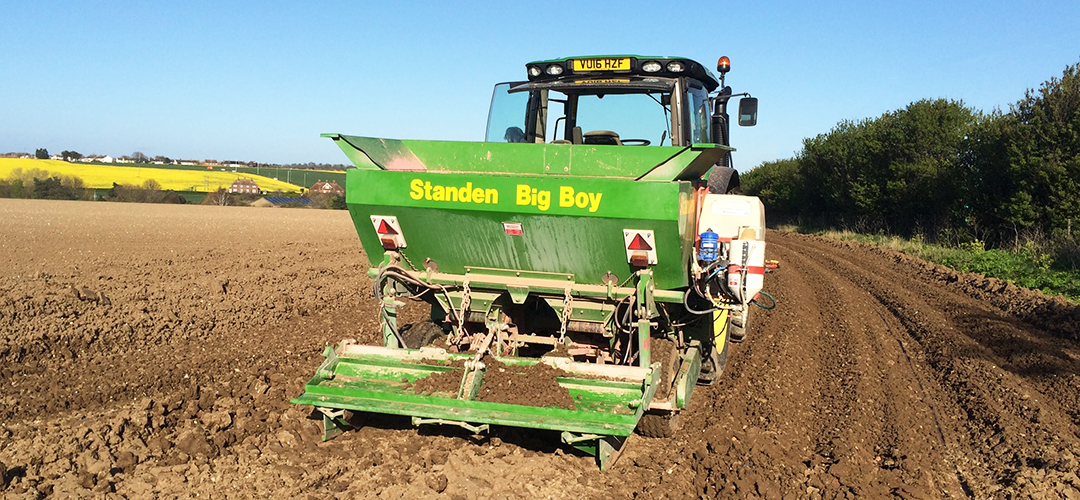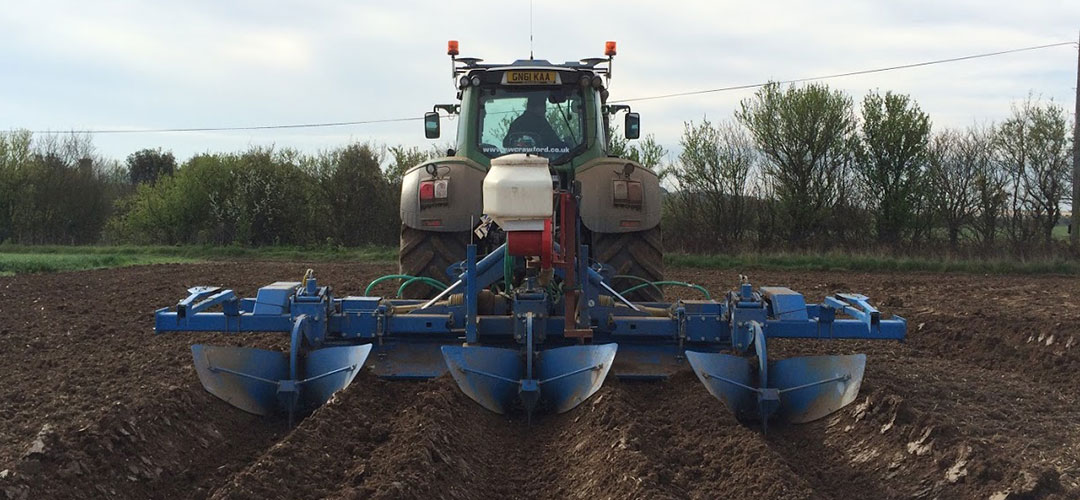We now offer a contract potato growing service involving planting, spraying, harvesting and grading.
We also offer a full agronomy and growing service in conjunction with Provenance Potatoes.
In a joint venture between Monkton Court Farms and Provenance Potatoes Jeremy McCabe is providing power, labour and management for this potato enterprise. Having started in 2016 we are now looking forward to the 2017 season and beyond.
Early Fertiliser and Seed Preparation for Planting
By now most fields intended for spring cropping should be soil sampled. If there is a high requirement for potash (K) it is advisable to apply this as soon as the ground is ploughed, particularly where muriate of potash is the main source.
Attention to detail during handling and preparation of seed prior to planting can result in an increased early tuber yield, while optimising fry colour and skin quality.
Seed management
It is important to carefully check the seed when it arrives on farm and have a sample hot boxed to determine the presence of disease and overall sprouting vigour.
Treat seed with a fungicide pre-planting to reduce disease transmission and maximize marketable yield.
Monitor seed carefully as conditions warm up, particularly where cold storage is not available, to prevent any deterioration of quality which can occur quickly at this time of year prior to planting.
As planting progresses, it is important to ensure good quality seed beds are produced. Increasing soil contact around the developing tuber helps reduce scab and also allows residual herbicides to work effectively. Also check now and again to ensure correct planting depth and spacing.
Plans should be in place for early weed control to ensure key timings are not missed. Where pre-emergent products are used check crops regularly to ensure herbicides are applied on time to avoid crop damage.
Planting and Soil Conditions
Soil compaction is increasingly blamed for below par yields of potatoes.
As planting gets under way the advice is to: set tyre pressures correctly, limit the amount of field traffic where possible and avoid working damp soils which are more prone to damage.
Late Season Management
Regularly inspect crops to ensure blight does not establish as crops begin to senesce. Maintain blight spray programmes until after haulm desiccation.
Regular trial digs should be carried out to indicate when tuber size has reached your market specification, allowing desiccation to be timed accordingly. Allow sufficient time for full skin set before harvesting the crop into a controlled environment store.
Harvesting
Reducing Damage
With the potato harvest ongoing, keep an eye on mechanical damage to tubers.
Damage occurs with drops from harvesters into boxes or trailers, bruising caused by insufficient soil on the web, slicing by exposed sharp edges or an incorrect share setup and crushing due to oversize tractor tyres running in the row bottom or stacking overfilled boxes.
Excessive damage often leads to increased problems in store and eventual down-grading of the produce. Early identification of damage is critical. Take daily samples of the harvested crop, wash and inspect for damage. Hot boxing gives a quicker indication if damage has occurred.
The entire harvesting team is made aware of the importance of damage and bruise prevention, as they are in the best position to identify problem areas.
Store Hygiene
Clean stores are essential for maintaining tuber health and quality post harvest.
Spores of many storage diseases lie dormant in the dust and debris in stores, boxes and equipment.
Significant reductions in infection can be achieved by thoroughly power hosing and vacuuming stores and equipment before the new crop is harvested and between batches of potatoes, particularly if there was any disease in the previous lot.
Effectiveness can be further improved by applying an approved disinfectant after washing and vacuuming.
Drying and Curing
Drying potatoes quickly, post-harvest, prevents the development of skin blemish diseases and soft rots. Drying within 48 hours using positive ventilation systems significantly reduces the development of diseases such as silver scurf.
The curing period immediately following harvest is one of the most important storage phases. Wound healing occurs most rapidly at high temperatures and high humidity.
Maintaining the crop at 12 to 15 degrees centigrade and 85 per cent relative humidity for a period of about two weeks, often referred to as ‘dry curing’, allows wound healing to take place, whilst minimising the risk of disease development. Ventilating the store on dry afternoons during the curing period will normally provide adequate curing conditions.




Contact us about our potato service
We know exactly who grows every potato we sell, what field they grew them in and even the tiny seeds they originated from.
We oversee the washing, grading, packing and delivery of all our potatoes to ensure they reach you in exactly the way our farmers would want them to.
